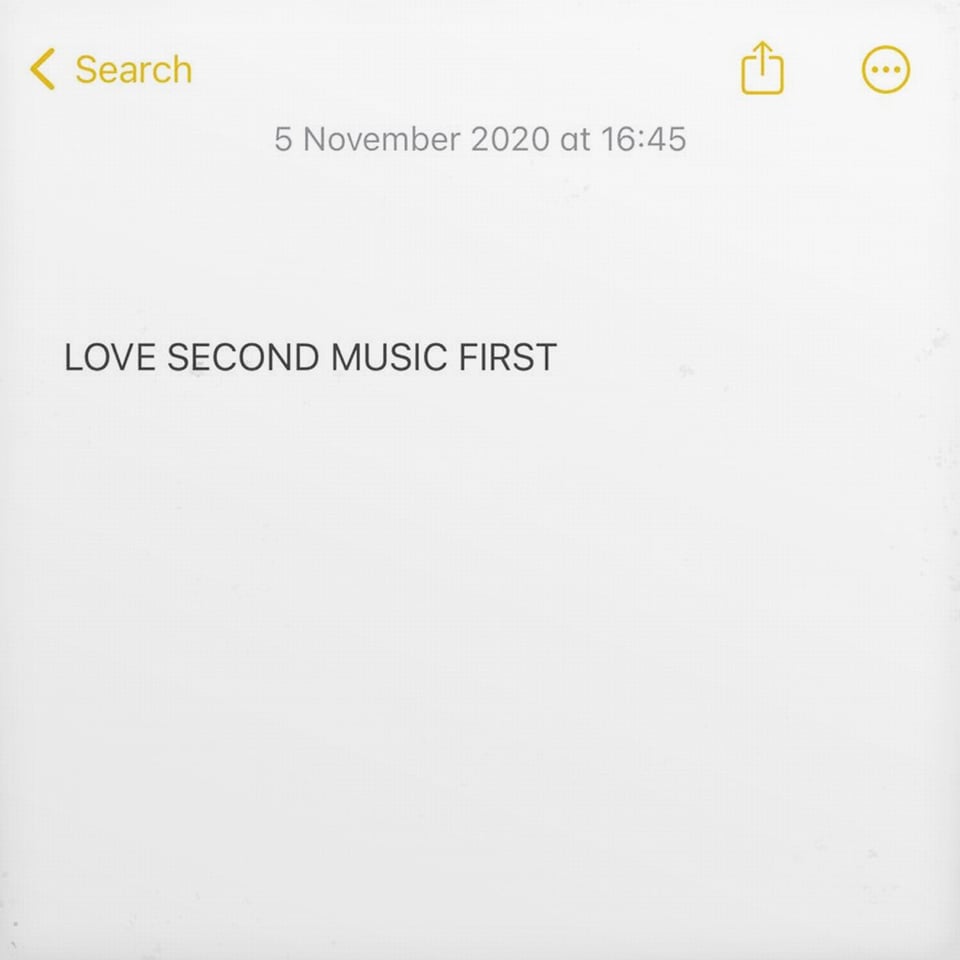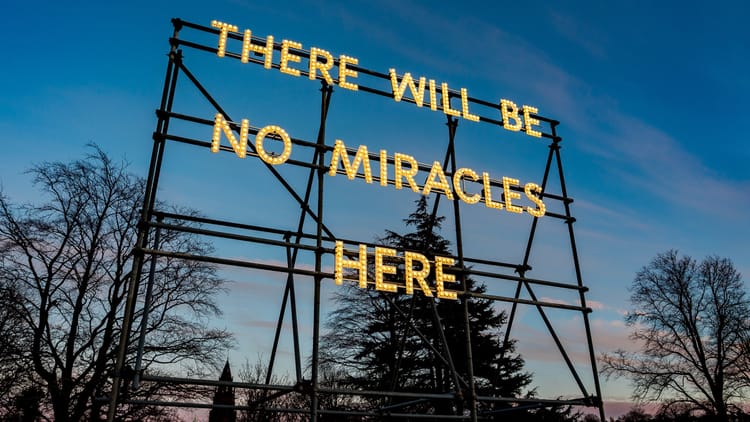A year of writing frivilously

I published the first of these newsletters late last September. Little did I know that one year later I would have built up enough of a head of steam to quit my job and become a full-time writer. Feel blessed 🙏
I jest.
I still write posts at awkward times of the day while ignoring my childcare responsibilities and essential life admin.
As I cram a celebration birthday cake into my mouth with one hand, I’ve typed out some observations with the other.
Apologies in advance: this is a navel-gazing email newsletter about email newsletters.
The intention is to offer some musings on what it’s like to write (semi) regularly in the hope that it might encourage others to do the same.
Read to the end for a call to action!
Damned lies and web statistics
When I first built up the courage to start Nothing Earth-shattering I had no idea if I could keep it going.
Over the years I’ve set up many a blog, on many a platform, and they’ve all faded into insignificance.
My most successful endeavour was on Posterous, a lovely little publishing platform that Twitter acquired, then promptly killed off 😢
For shame: one of the reasons I took to it was down to the uber straightforward publishing process (you could format an email, send it, and have it auto publish; it felt like magic).
There's a lot to be said for removing barriers when it comes to habit-forming behaviour.
So far I’ve published just shy of 30 posts, and have gradually built up a compact and bijou following.
My move from one newsletter platform (Substack) to another (Buttondown) means it’s tricky to put a precise finger on, but since I started my posts have had close to 6,000 views overall.
My email open rate averages at 70%, which is huge in comparison to, well, just about every newsletter I’ve ever been involved in from a day job perspective.
On the surface that feels like a nice warm audience. But as anyone familiar with web stats knows though, it’s practically impossible to tell if people are poring over every paragraph, or scanning the opening sentence, eyerolling, then flicking back to complete today’s Wordle.
Case in point, earlier in the year The Guardian introduced a deeply read feature which is a more expansive measure than just playing it for clicks.
I don’t have access to such fancypants analysis, but if I squint I can deduce that my most read posts have had vaguely provocative subject lines and topics, which is helpful as I ponder the content hole I’m trying to fill.
WTF is my USP?
Something that’s been consistent in my writing is my hand-wringing tendency to try and figure out the lanes I should stay within.
My recent fallow period hasn’t helped, so it’s been useful to mull things and lay out what I’m trying to achieve when I write these newsletters.
A semi-structured mission statement if you like.
Here goes:
- I like writing about the impact of technology
Not so much in a systems or code-based way, more about how it can be both a positive and nefarious influence (frustratingly, quite often at the same time). - I like exploring how technology trends have changed over time
And I like to reflect on how those trends intertwine with my own life and work experiences. - I prefer to stand back from the noise before forming an opinion
I’m sure this is at times infuriating for the people I work with, but my quick takes and gut reactions are rarely as good as the things I’ve slept on. Sometimes for WEEKS. - I’m not all that visionary
I’m better when I’m riffing off existing concepts rather than spontaneous idea generation. I’m pretty hopeless in a brainstorm, but I can write you a pithy summary. - I’m self deprecating to the point of tedium
Yawn. - I like pop music
My algorithm recommended Chappell Roan and English Teacher before yours. Probably. - I can be snarky
Hopefully not for the sake of it, as previously discussed. - I like bulleted lists
In many ways I write about the topics I enjoy reading about, only delivered in a soft Glaswegian accent.
Collected observations
Here are a few other points I’ve considered as I’ve gone along:
🔗 Links help with structure and function
My stats show that people don’t generally click on inline links (when the link is part of the body of the text – usually to help provide further context, or expand on a point, or act as a lo-fi citation to prove I’m not simply freestyling and making facts up), and are more likely to follow a link when it’s core to the subject I’m covering.
🧱 Email inboxes are walled gardens
Related to the point above, I’ve realised my own email inbox is one of the last bastions of a quieter online experience – multimedia/interactive elements are at least a click away, ads are minimal and unobtrusive.
When I’m reading a newsletter it tends to be because I’ve already invested in opening it, therefore clicking off elsewhere needs to feel like a worthwhile next step.
My friend Dan says I really should start using an RSS reader like a proper tech-savvy adult, but I just can’t get away from my Gmail inbox and all its infuriating foibles.
💡 Ideas usually take time to get onto the page
What can feel like a well-formed concept in my head can be difficult to put into words.
When I go for a run or a swim, I’ll often get a full story arc in my head, only for it to vanish to nothingness when I get near a keyboard.
Conversely, sometimes a passing quip or the briefest of conversations can spawn an entire post in an hour.
🗺️ Planning makes perfect
From the outset I had a notion of topics I wanted to cover off, and I quickly realised that in order to keep things flowing, I needed structure.
I initially wrote a long list of themes in my Moleskine, however that’s largely been replaced by a series of draft posts saved in Buttondown’s newsletter software.
I use Apple’s Notes app to capture info when I’m out and about, as it means I can relatively seamlessly move between devices; a draft Gmail message also fulfils the same function.

Despite numerous attempts, I’ve never been able to get to grips with productivity software or apps, which might make all of this flow a little more easily.
No doubt I’m showing my age, but I prefer apps that do one task well and don’t come with a complicated set up or maintenance overhead.
⏱️ Cadence can be overrated
When I started out, it felt critically important to be maintaining a regular rhythm of posting.
Some of that early fervour was, I suspect, about not falling out of the habit. But I did clock that I was getting slightly anxious when an in-my-head deadline slipped.
There’s a logic to thinking regularity is directly linked to building and sustaining an audience. However in an age of distributed media and the non-linear way most folk consume information now, I’m not convinced it’s hugely important.
❤️ Comments are LOVELY
I’ve had recent to-and-fros with other people who publish stuff (independently of the standard social channels) about how difficult it is to determine if a post or idea has been well received.
When I do get comments, sometimes as replies, sometimes as emails/SMS, or occasionally face-to-face, it makes such a difference.
✏️ A good edit goes a long way
I keep coming back to this post about whether Taylor Swift’s Tortured Poets Department would have benefitted from an editor, making the point that “it’s hard to get an objective view on your own work.”
I find it amusing that several big name writers who now publish their own newsletters have taken a swipe at the controls of ‘mainstream media’ and celebrate their new found freedom to write without censorship (or words to that effect).
Surveying some of the overlong, turgid prose and shoddily structured posts, it’s clear that a decent sub-editor serves more purpose than just watering down ideas.
Despite my AI reticence, I find Anthropic’s Claude to be a useful tool for weeding out wording, structure and format that aren’t sitting quite right.
But it’s my long-suffering wife (she’s sighing as she reads this right now), or the select few I’ve asked to give me feedback along the way, who have been most instrumental when I need a second pair of eyes or to refocus my thinking.
Nothing’s better than a human in the loop, right?
Where are all the Scottish weeknotes?
If you’re working in and around digital in the public or third sectors, you’ve maybe noticed a vibe where working in the open is, once again, being championed and encouraged.
It was a cornerstone of the early work of Government Digital Service, which flowed through to lots of other delivery bodies, and it was a big driver for luring me to the Civil Service in the mid 2010s.
The volume of posts and information sharing has notably dipped in recent years – I suspect down to some of the reasons I expressed in my last post – but there’s undoubtedly a resurgence afoot.
I won’t go into the whys and wherefores: there have already been various excellent summaries that explain what feels like a zeitgeist moment. See Jeni Tennison, Neil Williams, and Laura Yarrow’s excellent posts for the background to this, as well as Martha Lane Fox’s rallying cry.
What I do wonder, though, is where are all the Scottish voices?
Who’s doing the blogging, the weeknoting, the newslettering, the TikToking, the podcasting, the quick & dirty reportage on the Scottish public sector tech scene?
Unless there’s a massive WhatsApp group that everyone shares their bants on, from which I’m deliberately excluded (perfectly plausible), it all feels a bit tumbleweedy.
Judging by the volume of conferences that take place, and low-level activity bubbling along on LinkedIn, there’s not a shortage of programmes and projects happening.
I see the odd corporate piece, and some post-conference analysis, but it’s slim pickings when it comes to more consistent writing, or stuff that gets under the skin of the subject.
Hats off to John Fitzgerald for his commitment to the cause.
I can understand some of the reasons, particularly as a lot of the current momentum relates to a UK, rather than specifically Scottish, political context.
But that’s also what makes it so important to get Scottish ideas and thinking out there. There are markedly different factors at play, and perspectives that would be great to share.
I’ve seen critiques of working in the open. Fair enough.
From personal experience, though, I can 100% guarantee I’ve made better design and development decisions based on informal writing and how-to blog posts, rather than any conventionally published strategy.
Texture matters, details matter, tone of voice matters.
Call to action corner
If you’re in/around the Scottish scene doing some interesting work in the digital or public service realm, why not give a blog post a go. Or a weeknote. Or a vlog. Or whatever floats your boat.
One of the reasons for writing >this< is to try and offer some gentle motivation. Please don’t overthink it: choose a platform, bash out a couple of paragraphs, see what happens.
Or if you already do this, or know of people who are, send me links!
That’s two calls to action, isn’t it? I’m better with words than numbers.
✍️ Thank you for reading.





Member discussion